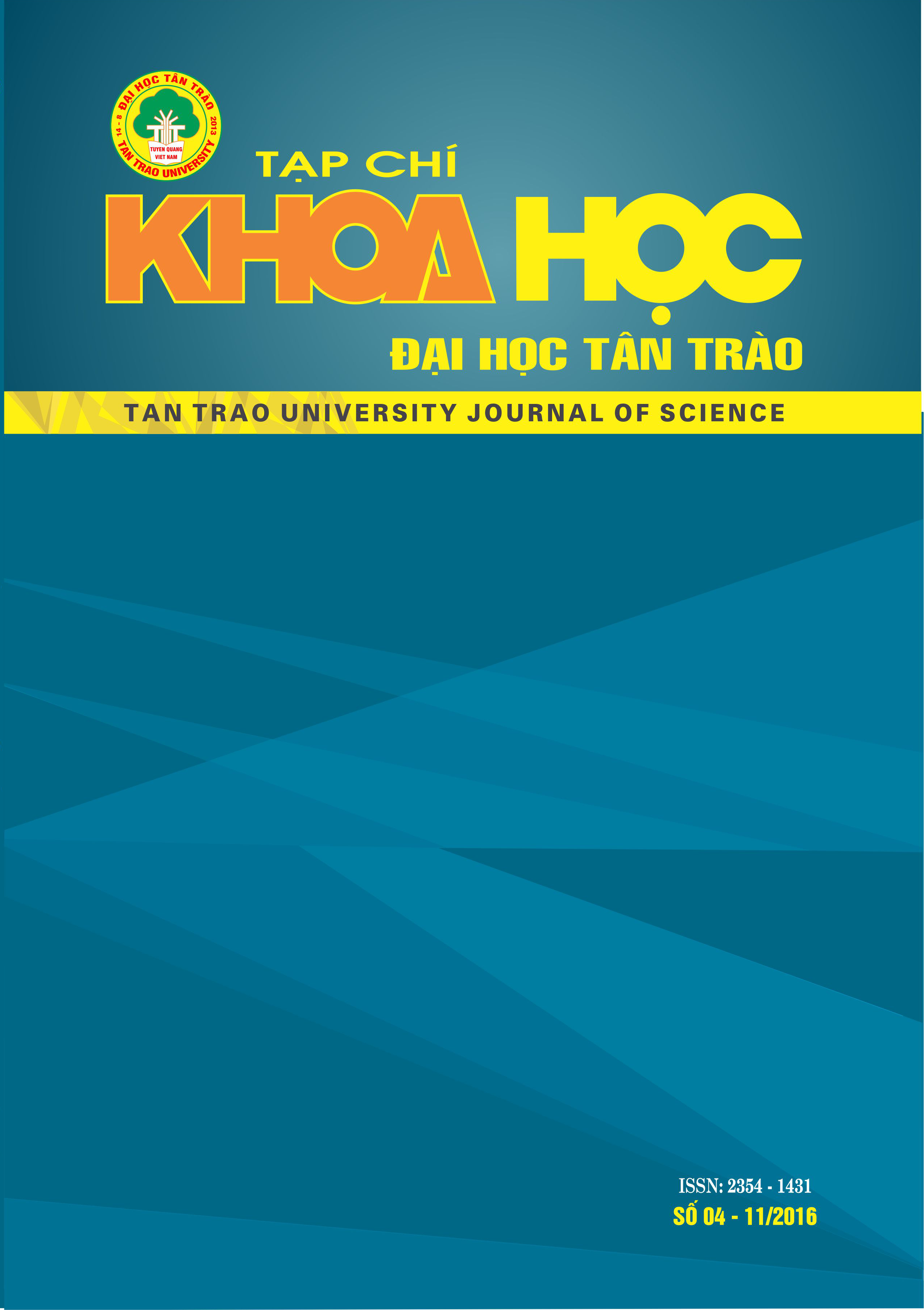TÌM HIỂU VỀ NGÔN NGỮ CŨNG LÀ SỰ KHÁM PHÁ VỀ VĂN HÓA
DOI:
https://doi.org/10.51453/2354-1431/2016/106Từ khóa:
văn hóa; ngôn ngữ; sá»± biểu thị; sá»± khác biệtTóm tắt
Chúng ta quan sát nhau, ăn cùng nhau và nói chuyện cùng nhau, và từ đó chúng ta biết nhau. Bài viết này quan điểm của một người nước ngoài về giá trị của việc tìm hiểu các ngôn ngữ của những người mà chúng tôi đã từng sống và làm việc cùng. Bài báo cũng dụng ý làm rõ sự bổ ích trong việc chia sẻ ngôn ngữ với người khác. Ngôn ngữ được thể hiện như là một sự biểu hiện rõ nét của văn hóa. Phần lớn những gì chúng ta nói và nói như thế nào đều phản ánh các khía cạnh về văn hóa. Ở những người lớn tuổi, những từ ngữ họ dùng, cách sử dụng từ ngữ, sự nhấn mạnh vào một số từ ngữ cụ thể, sự có mặt và vắng mặt một số từ ngữ cụ thể khi miêu tả chi tiết, và thậm chí cả thời lượng nói, sự im lặng hoặc tạm dừng, tất cả đều biểu thị văn hóa qua ngôn ngữ. Có sự nhìn nhận không chính xác coi ngôn ngữ như là phương tiện trung gian để khám phá sự khác nhau về văn hóa và trên hết là cần một ngôn ngữ chung để tìm hiểu sự khác biệt và giống nhau của các nền văn hóa. Bài viết này biện luận rằng, qua việc chia sẻ ngôn ngữ, chúng ta ít nhất bắt đầu để tìm hiểu sự phức tạp của văn hóa.
Tải xuống
Tài liệu tham khảo
1. Hauser, M.D., Chomsky, N., and Fitch,W.T. (2002). The Faculty of Language: What Is It, Who Has It, and How Did It Evolve? Science, 298, 5598, pp. 1569-1579.
2. Kramsch, C. (1998). Language and Culture. Oxford: Oxford University Press.
3. Mackellar, D. (1908) My Country. Retrieved August 18, 2016, from www.dorotheamackellar.com.au/archive/mycountry.htm
4. Mandelbaum, D.G. (ed.) (1949). Selected Writings of Edward Sapir in Language, Culture, and Personality. University of California Press: Berkeley.
5. Nau, N. (2014). Exploring Linguistic Diversity. In Book of Knowledge (BoK), Languages in Danger, INNET Project. Retrieved August 8, 2016, from www.languages indanger.eu
6. Nettle, D. and Romaine, S. (2000). Vanishing voices. The extinction of the world’s languages. Oxford: Oxford University Press.
7. Robinson, G. L (1985). Cross-cultural understanding: Processes and approaches for foreign language, English as a second language and bilingual educators. Oxford: Pergamon.
8. Singh, P. and Rampersad, R. (2010) Communication challenges in a multicultural learning environment. Journal of Intercultural Communication, 23 June 2010. Retrieved August 8, 2016, from www.immi.se/intercultural/
Tải xuống
Đã Xuất bản
Cách trích dẫn
Số
Chuyên mục
Giấy phép

Tác phẩm này được cấp phép theo Giấy phép Quốc tế Creative Commons Attribution-ShareAlike 4.0 .
Bài báo được xuất bản ở Tạp chí Khoa học Đại học Tân Trào được cấp phép theo giấy phép Ghi công - Chia sẻ tương tự 4.0 Quốc tế (CC BY-SA). Theo đó, các tác giả khác có thể sao chép, chuyển đổi hay phân phối lại các bài báo này với mục đích hợp pháp trên mọi phương tiện, với điều kiện họ trích dẫn tác giả, Tạp chí Khoa học Đại học Tân Trào và đường link đến bản quyền; nêu rõ các thay đổi đã thực hiện và các nghiên cứu đăng lại được tiến hành theo cùng một bản quyền.
Bản quyền bài báo thuộc về các tác giả, không hạn chế số lượng. Tạp chí Khoa học Tân Trào được cấp giấy phép không độc quyền để xuất bản bài báo với tư cách nhà xuất bản nguồn, kèm theo quyền thương mại để in các bài báo cung cấp cho các thư viện và cá nhân.
Mặc dù các điều khoản của giấy phép CC BY-SA không dành cho các tác giả (với tư cách là người giữ bản quyền của bài báo, họ không bị hạn chế về quyền hạn), khi gửi bài tới Tạp chí Khoa học Đại học Tân Trào, tác giả cần đáp ứng quyền của độc giả, và cần cấp quyền cho bên thứ 3 sử dụng bài báo của họ trong phạm vi của giấy phép.






